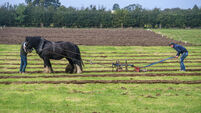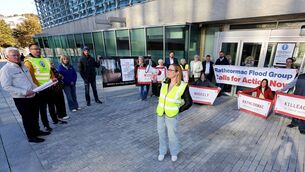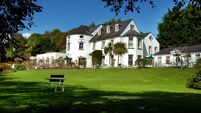Mick Clifford: We must take our Tricolour back from those who sow hate and intolerance
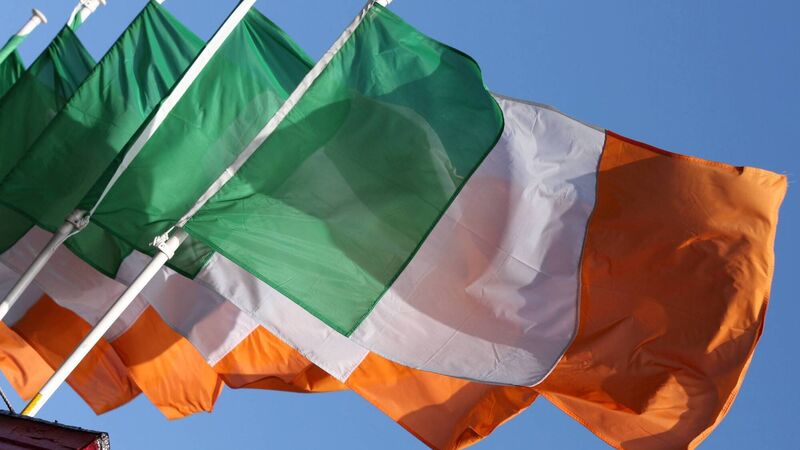
Since it was first raised in Waterford in 1848, the Irish Tricolour has frequently been misappropriated to stand for division. But, from State occasions to sporting celebrations, it will always be waved in a spirit of pride and peace. Stock picture: Nick Bradshaw
The poor Tricolour. When will it ever make its way home to the people of Ireland?
Last Saturday in Cork, there was a rally organised by far-right activists or, as they might style themselves, nationalists. Their agenda, to the extent that they have one, is focused on making Ireland poor again.
They apparently want the country to revert to a time when nobody would come near the place because it was, as Gay Byrne once noted, banjaxed.
The defining image of their march was the prominence of the Tricolour in various forms. These people were claiming to represent the State, its origins, and all that has flowed from it.
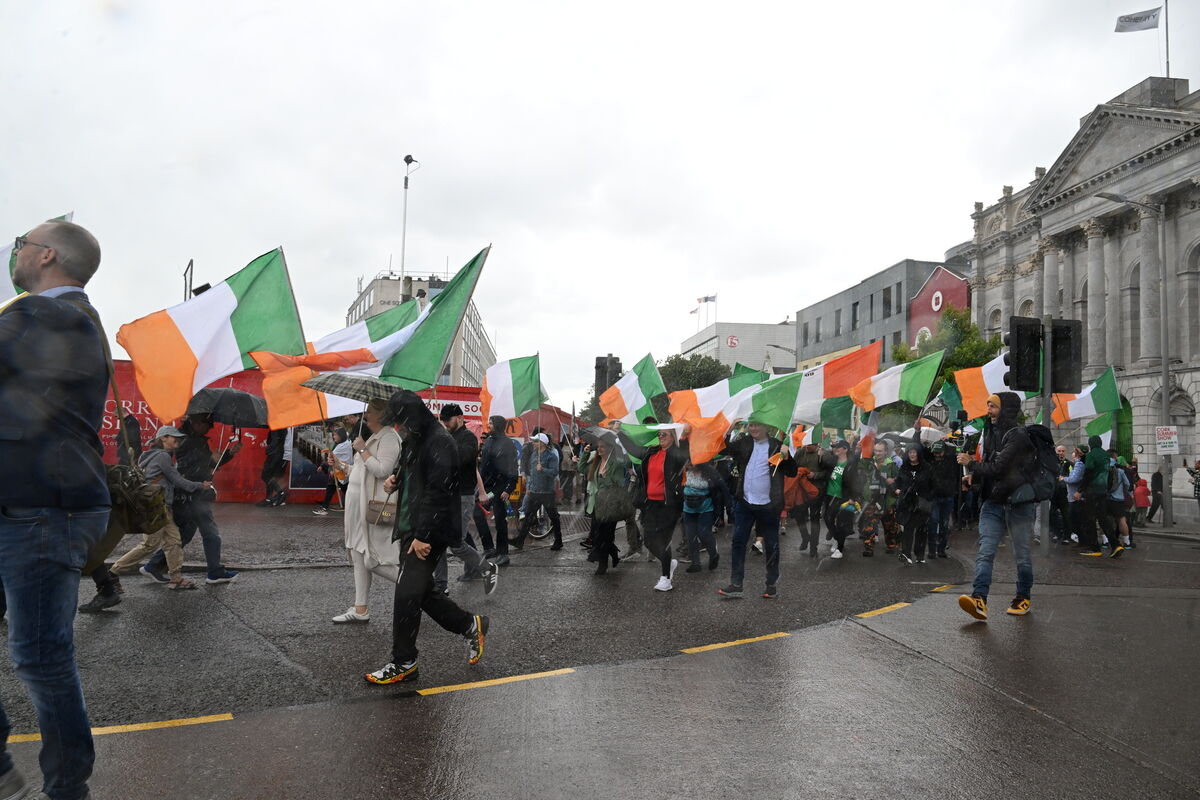
Ahead of the march, a few lads were selling cheap Tricolours. The plan was obviously to display as much green, white, and orange as possible, identifying marchers with some mystical notion of what the flag might represent.
An identical scenario was played out in April, ahead of a march organised by the same elements in Dublin. They started at the Garden of Remembrance, and marched down O’Connell St, past the GPO, the cradle of the nation, waving the national flag as if they possess a direct political lineage to the men and women of 1916, who fought and died for an inclusive Republic.

Together, these two marches, or shows of strength as the organisers might have it, demonstrate the extent to which the Tricolour has once again been misappropriated. For instance,
Eoin English’s report in Thursday’s Irish Examiner about threats made to bar staff in the wake of last Saturday’s march, referred to the prominence of the flags.
Bar owner Benny McCabe told Eoin that he had left instructions that “nobody would be refused for carrying an Irish flag”. Entirely correctly, the businessman assumed the Tricolour was now an integral part of the paraphernalia attaching to these elements.
It was obvious at the general election last November: As one commentator noted, the places that the Tricolour was flown prominently during the 2020 election tended to be strongholds of Sinn Féin. But at the 2024 election, the flying of the flag suggested allegiance to the new form of nationalism current, that of intolerance, exclusion, and hate, with particular emphasis on despising immigrants.
At the moment, the display of the Tricolour outside a home, a vehicle, or other property is to invite identification with far-right elements. Such an identification may well be mistaken.
An independent-minded person, proud of their nation’s record in helping the world’s most downtrodden, or acting as agents of peace, may well decide to plant the national flag in their front garden. That is an act of a strong and independent mind.
But unless the flag-bearer is willing to sit out in the garden and explain in detail to passers-by the premise for the display, an assumption will be made that they subscribe to the ugly strain of nationalism.
Of course, we have been here before. Throughout the 1970s and 1980s, another ugly form of nationalism had somehow misappropriated the flag.
At that time, it was associated with the Provisional IRA and its political wing. By extension, and by deed, this pitched the flag as a prop in a campaign of violence designed to terrorise Protestants into a United Ireland.
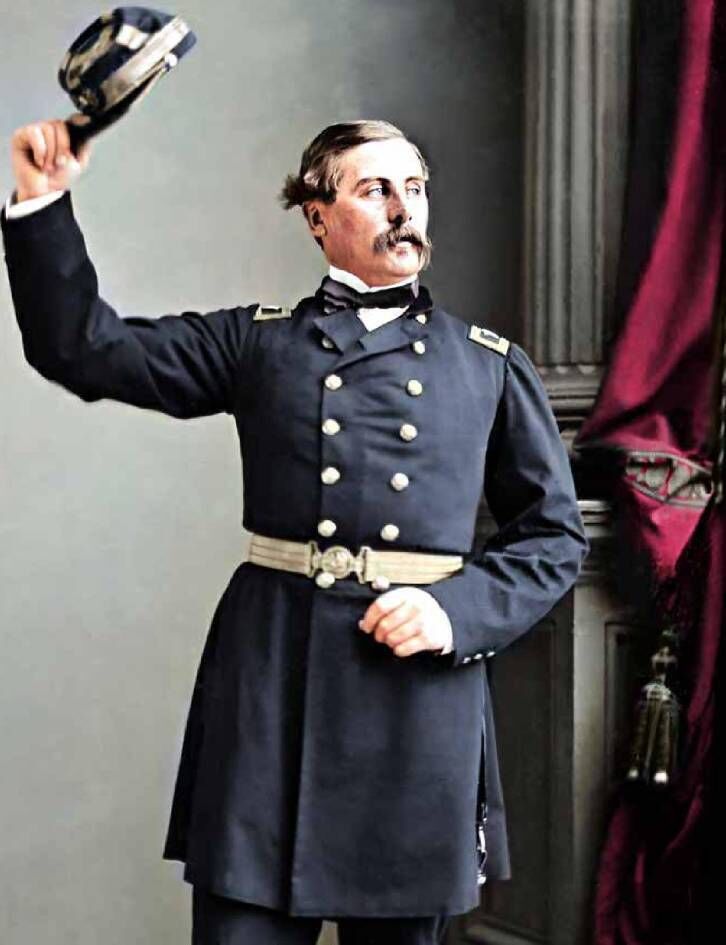
Just as today’s flag-carriers attempt to dehumanise children through the colour of their skin, so the Provos did likewise with all victims of its indiscriminate bombing, all targets of ethnic cleansing along the border. While they attempted to portray their nationalism as a struggle, in reality it subscribed to the standard ugly form of exclusion.
Ironically, the Tricolour would have been a legitimate standard for those in the North, and across the island, who aspired to peacefully achieving a United Ireland.
It was first flown in 1848 by Thomas Francis Meagher, who stated that the white was to signify a truce between Catholics and Protestants with the hope they can live together. That is an entirely legitimate aspiration and one that still persists today across the political spectrum.
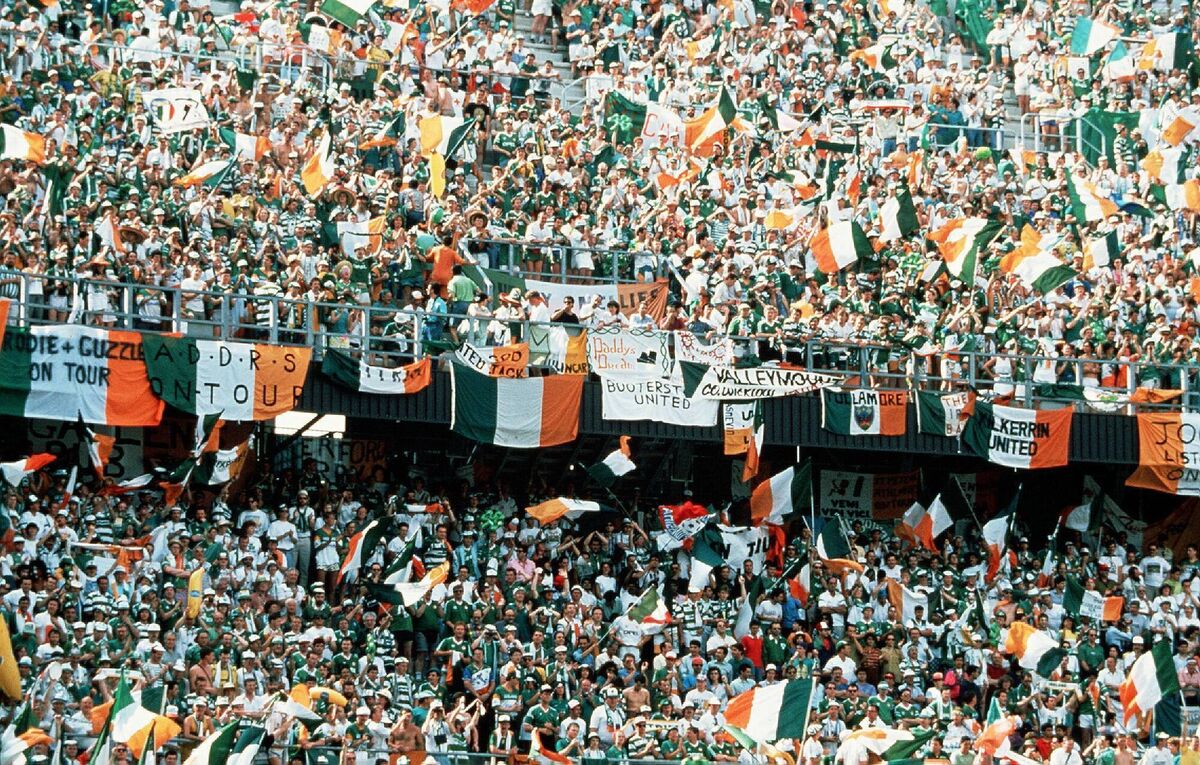
The 1990 World Cup was seen by many as the time when the flag began to come back to the people of Ireland as a whole.
Roddy Doyle, who set his best-selling novel The Van in that frenzied summer of Italia ’90, was of this opinion when reflecting on the time during the 30th anniversary.
“It was the best of the luck that I had when I was writing the book that the World Cup took off and indeed the Provos owned the flag for a while but then in 1990 when people waved it to celebrate, that was big, and I think The Van captures that quite well,” he said.
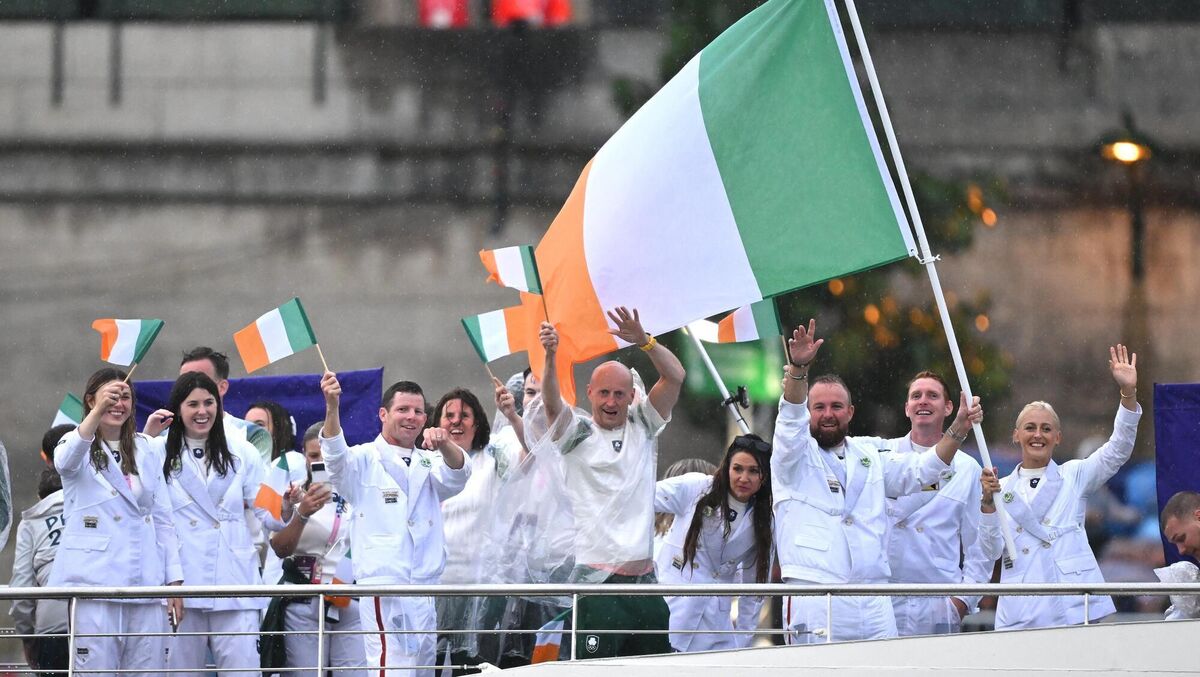
By the turn of the century, the flag was well and truly reclaimed. Sure, Sinn Féin was prone to roll it out for any bunfight, but their ostensible allegiance to peaceful means meant it wasn’t to be sullied any more.
All the way up to the last five years, the Tricolour was, to a large extent, back where it belonged. Even when Conor McGregor was in the early straits of his career it was possible to feel — go on, admit it — a sting of pride when he wrapped the flag around himself.

Today, the sight of the man who would be president draped in the flag would be enough to make you want to jump up and declare “not in my name”.
That’s where the national symbol resides now and its misappropriation is being perpetrated in an organised fashion. Those who have attached it to their agenda of hate are not representative of any coherent section of society.

At the last general election, none of their ilk were elected to the Dáil. Only a handful of councillors who march under the broad standard were elected to districts across the State last year. So, in any court of public opinion, they might well be indicted for misappropriation of a national symbol.
It isn’t totally lost. Of course, it will continue to be flown at official events and at Irish soccer matches in particular.

There are plenty of occasions, not least during Amhrán na bhFiann during All-Ireland Final day, when turning to the flag can still induce a sense of pride in what we like to think of as the positives aspects of being Irish.
There is also the possibility that it might be serving through its final years as the national flag.

.

Should the project of uniting the island as one political entity reach fruition, the various symbols will be up for grabs, with the Tricolour most likely topping the agenda.
In theory, the Tricolour would be the perfect flag of a United Ireland in terms of its original design and interpretation. But it has been through so much since, misappropriated in so many ways, it’s unlikely that those who associate it with killing during the Troubles would be happy to salute it.
In the meantime, while it remains the State’s national flag, it would be nice to have it back.






